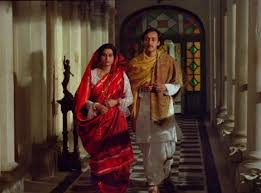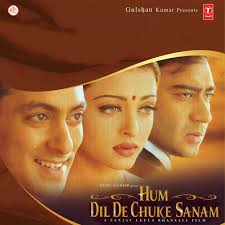The Home and the World: A Tale of Love and Loss
Hello readers.This blog is the part of thinking activity task based on the unit "The Home and The World" by Rabindranath Tagore of paper no.201 Indian Writing in English. Before diving into the work let's overview the Tagore and his works.
Rabindranath Tagore [1861-1941] :
The novel "Ghore Baire" (in the original Bengali, ঘরে বাইরে Ghôre Baire or Ghare Baire, lit. "At home and outside")by Rabindranath Tagore, originally published in Bengali in 1916, provides a compelling exploration of the clash between Western and Eastern cultures in the context of early 20th-century Bengal. The story centers around Nikhilesh, a rational and peace-loving individual who embraces Western values, and Sandip, a passionate and determined nationalist who advocates for resistance against Western influence.
The novel delves into the complex psychological [personal relationship] and ideological [in broder context of India ] struggles faced by Nikhilesh as he grapples with the conflicting ideals of modernity and tradition. His internal conflict mirrors the broader societal tensions prevalent in Bengal during this period,[1907-08] as the region grapples with the impact of colonialism and the emergence of nationalist movements.
In the revolutionary Bengal of 1905, the autobiographical narratives of 3 characters confluenced : Nikhil-the idealistic husband, Bimala and Sandip. In mining activity of the text we find the deeper discussion of tradition, the role of men and women in Indian Culture, the nature of political change, use of violence in political activism. In a way it tragic example of confict between realism and idealism.
This video encompasses the backdrop of first conscious anti-British protest of India under Lord Curzon's idea "Divide and Rule" The novel "Ghore Baire" is set during the Swadeshi movement, a nationalist response to the Partition of Bengal by the British colonial administration. This period was marked by the rise of "Bande Mataram," a patriotic song composed by Bankim Chandra Chattopadhyay, which became a rallying cry for nationalists opposing the Partition.
The Swadeshi movement, which spread across the Indian subcontinent, was characterized by both extremist and moderate factions. The extremists advocated for the superiority of Indian economy, politics, and arts, while the moderates focused on social reform. These internal divisions within the Congress Party contributed to the complexities of the movement.
Barana Guha Thakurta in the article ,"Beyond a Conjugal Life; Tagore’s Home and the World: A Gendered perspective" Whether intentional or not Ghare Baire has questioned the stereotyped mainstream conjugality of the then Bengali society which may be relevant even now. The institutionalized conjugal life may allow couple to stay under the same roof without even knowing each other.
Ghare Baire has questioned the nature of conjugality of the Bengali society yet Bimala’s return to Nikhilesh at the end without any outside compulsion is very significant. Bimala though motivated by Sandip initially has responded to the nationalist call but her dedication to the movement was an honest one and hence cannot be questioned.
Recently, we had the opportunity to delve into Rabindranath Tagore's acclaimed novel "The Home and the World" through both literary analysis and cinematic adaptation. Satyajit Ray's masterful film rendition provided a unique perspective on the original work, allowing for a rich comparison between the two mediums.
While films can offer a visually compelling interpretation of literary works, they often necessitate artistic liberties that may deviate from the original text. As literature students, we understand the significance of engaging with both the novel and its film adaptation to gain a comprehensive understanding of the author's intended themes and messages.
That same we did by enagaging in the highlighting the difference between the novel and film. The film adaptation of "Ghare Baire" faithfully adheres to the novel's initial plot development, with many dialogues and character portrayals remaining largely unchanged. The beiginning, the inciident of Bimala making sweets for the Amulya, minor incidents of Hari Kunnu was totally evaporeted.
Nonethless, the cinematic medium allows for the addition of visual elements, such as songs and enhanced emotional expressions, which can enrich the viewer's experience. One notable departure from the original text is the introduction of songs sung by Sandip to provoke Bimala, adding a layer of complexity to their relationship.
Additionally, the film intensifies the romantic connection between Sandip and Bimala, while the novel maintains a more subtle approach. The conclusion also diverges, with the film depicting Nikhilesh's death and Bimala's widowhood, whereas the novel ends with Nikhilesh leaving for the village and Bimala remaining in her home.
While films can effectively convey the emotional states of characters, literature often provides a deeper exploration of themes and subtexts. By engaging with both the novel and its film adaptation, we can gain a more nuanced understanding of the story and its underlying messages.
Symbols and Themes in "The Home and the World"
Symbols:
- The Home: Represents traditional values, stability, and the past.
- The World: Symbolizes modernity, change, and the future.
- The Tulsi Plant: Represents purity, devotion, and the connection to the divine.
- The Mango Tree: Symbolizes fertility, abundance, and the cycle of life.
- The Partition of Bengal: Represents the political and social turmoil of the time.
Themes:
- Cultural Identity: The novel explores the challenges of maintaining cultural identity in the face of Western influence.
- Social Change: The novel examines the impact of social and political change on individuals and communities.
- Political Activism: The novel delves into the complexities of political activism and the potential dangers of extremism.
- Love and Relationships: The novel explores the complexities of love and relationships in a time of social and political upheaval.
- The Power of Tradition: The novel examines the role of tradition in shaping individuals and societies.
Both works depict a clash between traditional values and modern ideals. In "Hum Dil De Chuke Sanam," the conflict arises between the arranged marriage system and individual love. In "The Home and the World," the conflict is between the traditional values of India and the influence of Western culture.
Guha Thakurta, Barnana, Banerjee. “Beyond a Conjugal Life; Tagore’s Home and the World: A Gendered Perspective.” NSOU JOURNAL OF SOCIAL SCIENCES, vol. 46, 2021.
Pham, Chi. Rabindranath Tagore’s the Home and the World: Story of the Failure of the Nationalist Project. 2014, escholarship.org/uc/item/3fd5r9tk.




.png)







No comments:
Post a Comment